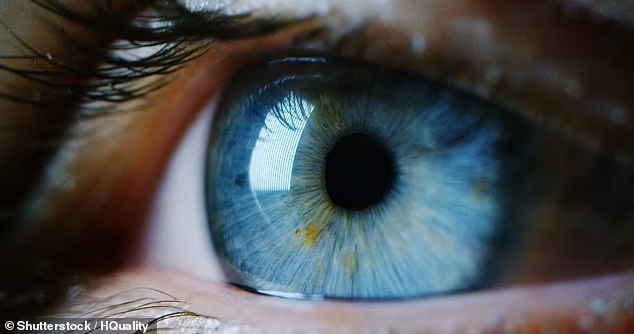Pupil Size Is a Marker of Intelligence
There is a surprising correlation between baseline pupil size and several measures of cognitive ability.
It has been said that “the eyes are the window to the soul,” but new research suggests that they may be a window to the brain as well.
Our pupils respond to more than just the light. They indicate arousal, interest or mental exhaustion. Pupil dilation is even used by the FBI to detect deception. Work conducted in our laboratory at the Georgia Institute of Technology suggests that baseline pupil size is closely related to individual differences in intelligence. The larger the pupils, the higher the intelligence, as measured by tests of reasoning, attention and memory. In fact, across three studies, we found that the difference in baseline pupil size between people who scored the highest on the cognitive tests and those who scored the lowest was large enough to be detected by the unaided eye.
We first uncovered this surprising relationship while studying differences in the amount of mental effort people used to complete memory tasks. We used pupil dilations as an indicator of effort, a technique psychologist Daniel Kahneman popularized in the 1960s and 1970s. When we discovered a relationship between baseline pupil size and intelligence, we weren’t sure if it was real or what it meant.
Intrigued, we conducted several large-scale studies in which we recruited more than 500 people aged 18 to 35 from the Atlanta community. We measured participants’ pupil size using an eye tracker, a device that captures the reflection of light off the pupil and cornea using a high-powered camera and computer. We measured participants’ pupils at rest while they stared at a blank computer screen for up to four minutes. All the while, the eye tracker was recording. Using the tracker, we then calculated each participant’s average pupil size.
To be clear, pupil size refers to the diameter of the black circular aperture in the center of the eye. It can range from around two to eight millimeters. The pupil is surrounded by the colorful area known as the iris, which is responsible for controlling the size of the pupil. Pupils constrict in response to bright light, among other things, so we kept the laboratory dim for all participants.
In the next part of the experiment, participants completed a series of cognitive tests designed to measure “fluid intelligence,” the capacity to reason through new problems, “working memory capacity,” the ability to remember information over a period of time, and “attention control,” the ability to focus attention amid distractions and interference.
As one example of an attention control test, participants had to resist glancing toward a bold, flickering asterisk on one side of a computer screen and instead rapidly look in the opposite direction to identify a letter. The letter would disappear within moments, so even a brief eye movement toward the flickering asterisk could result in missing it. Humans are primed to react to objects passing through their peripheral vision—it’s what once allowed us to spot a predator or prey—but this task required participants to redirect their focus from the flicking asterisk to the letter.
We found that a larger baseline pupil size was correlated with greater fluid intelligence, attention control and, to a lesser degree, working memory capacity—indicating a fascinating relationship between the brain and eye. Interestingly, pupil size was negatively correlated with age: older participants tended to have smaller, more constricted, pupils. Once standardized for age, however, the relationship between pupil size and cognitive ability remained.
But why does pupil size correlate with intelligence? To answer this question, we need to understand what is going on in the brain. Pupil size is related to activity in the locus coeruleus, a nucleus situated in the upper brain stem with far-reaching neural connections to the rest of the brain. The locus coeruleus releases norepinephrine, which functions as both a neurotransmitter and hormone in the brain and body, and it regulates processes such as perception, attention, learning and memory. It also helps maintain a healthy organization of brain activity so that distant brain regions can work together to accomplish challenging tasks and goals. Dysfunction of the locus coeruleus, and the resulting breakdown of organized brain activity, has been related to several conditions, including Alzheimer’s disease and attention deficit hyperactivity disorder. In fact, this organization of activity is so important that the brain devotes most of its energy to maintain it, even when we are not doing anything at all—such as when we stare at a blank computer screen for minutes on end.
One hypothesis is that people who have larger pupils at rest have greater regulation of activity by the locus coeruleus, which benefits cognitive performance and resting-state brain function. Additional research is needed to explore this possibility and determine why larger pupils are associated with higher fluid intelligence and attention control. But it’s clear that there is more happening than meets the eye.
Jason S. Tsukahara is a Ph.D. student in cognition and brain science at the Georgia Institute of Technology, where he does research in the Attention & Working Memory Lab.
Alexander P. Burgoyne earned his Ph.D. in cognition and cognitive neuroscience at Michigan State University in 2019. He is currently a postdoctoral research fellow in the Attention & Working Memory Lab at the Georgia Institute of Technology.
Randall W. Engle is a professor at the Georgia Institute of Technology and a member of the National Academy of Sciences.

